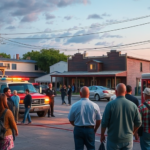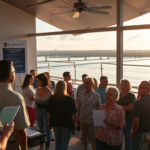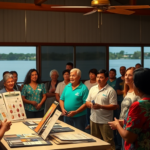**Severe Storm in Valley Kills at Least 6; Hundreds Rescued**
A severe storm has struck the Rio Grande Valley, claiming the lives of at least six individuals and resulting in the dramatic rescue of hundreds. As the community grapples with the devastating aftermath, local officials and residents reflect on the implication of nature’s wrath and how the community can fortify itself against future storms.
**The Impact of the Storm**
The storm, which swept through South Texas late last week, brought with it torrential rain, fierce winds, and widespread flooding, leaving a trail of destruction in its path. The storm’s severity was unexpected, and Valley residents found themselves battling rising waters and seeking refuge as the natural disaster unfolded.
Hidalgo County Sheriff Ramon Gonzalez reported, “This was one of the worst storms to hit the Valley in recent years. Our priority has been ensuring the safety of all Valley residents and assisting those affected.”
Local emergency services, overwhelmed with calls for help, worked tirelessly to rescue individuals trapped in their homes or stranded by floodwaters. Rescue teams, accompanied by volunteers, took to boats and high-water vehicles to access hard-hit areas, a heroic effort that undoubtedly saved countless lives.
**A Community Under Strain**
The storm has put a significant strain on the local infrastructure of the Rio Grande Valley, a region already vulnerable to severe weather. Roads have been washed out, power lines downed, and many homes remain without electricity. Shelters have been established to accommodate displaced families, and community resources are being stretched thin as they provide temporary relief.
María Torres, a McAllen resident whose home was damaged in the storm, expressed gratitude for the rescue efforts but highlighted the community’s ongoing challenges. “While we are thankful for the help, the reality is that rebuilding lives takes time. We need long-term support to recover fully,” she said.
**Connections to Past Weather Events**
This catastrophic event draws parallels to previous storms that have tested the resilience of Valley residents, such as Hurricane Hanna in 2020. Each incident has exposed vulnerabilities in the region’s infrastructure and sparked discussions on how better to prepare for and mitigate such disasters.
Community leaders, like Commissioner Roberto Flores from Cameron County, are calling for increased investment in flood prevention measures and infrastructure improvements to better protect against future events. “We must learn from these experiences and invest in solutions that will protect our community,” Flores urged at a recent county meeting.
**Planning for the Future**
Looking forward, local officials and organizations are evaluating what more can be done to fortify the area against future storms. This includes considering options like improved drainage systems, upgrading levees, and enhancing emergency response protocols. However, funding and coordinating these efforts remain significant hurdles.
Dr. Emily Ramos, a climatologist specializing in South Texas weather patterns, warned of the increasing frequency and intensity of storms due to climate change. “The RGV will likely see more events like this. Our response must evolve in tandem with these growing threats,” she commented.
**Providing Support and Resources**
In the aftermath of the storm, local agencies are mobilizing to provide support and resources to those impacted. The City of Brownsville and other municipalities have opened resource centers where residents can receive meals, clothing, and counseling services. Additionally, the Valley Baptist Health System is offering medical care and check-ups for those affected by storm-related injuries.
News outlets like RGV Local News are keeping the community informed with real-time updates and crucial information on where Valley residents can access services. Essential hotline numbers and online resources are being shared extensively to ensure no one is left in the dark.
**Conclusion**
As the Rio Grande Valley begins the long road to recovery, the bonds of community solidarity and resilience become ever more critical. The storm has not only showcased the vulnerability of the region but has also highlighted the strength and determination of those who call the Valley home. Moving ahead, the lessons learned from this disaster will undoubtedly inform and prepare the community for future challenges, underlining the enduring spirit that defines the heart of South Texas.







